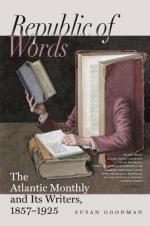This delay occasioned the bitter quarrel between Newton and Leibnitz,—a quarrel exaggerated by narrow-minded partisans, and in truth not very creditable, in all its ramifications, to either party. Newton, in the course of a scientific correspondence with Leibnitz, published in 1712, by the Royal Society, under the title, “Commercium Epistolicum de Analysi promota,” not only communicated very many remarkable discoveries, but added, that he was in possession of the inverse problem of the tangents, and that he employed two methods which he did not choose to make public, for which reason he concealed them by anagrammatical transposition, so effectual as completely to extinguish the faint glimmer of light which shone through his scanty explanation.[B] The reference is obviously to what was afterwards known as the Method of Fluxions and Fluents. This method he derived from the consideration of the laws of motion uniformly varied, like the motion of the extreme point of the ordinate of any curve whatever. The name which he gave to his method is derived from the idea of motion connected with its origin.
[Footnote B: This logograph Newton afterwards rendered as follows: “Una methodus consistit in extractione fluentis quantitatis ex aequatione simul involvente; altera tantum in assumptione seriei pro quantitate incognita ex qua ceterae commode derivari possunt, et in collatione terminonim homologorum aequationis resultantis ad eruendos terminos seriei assumptae.”]
Leibnitz, reflecting upon these statements on the part of Newton, arrived by a somewhat different path at the Differential and Integral Calculus, reasoning, however, concerning infinitely great and infinitely small quantities in general, viewing the problem algebraically instead of geometrically,—and immediately imparted the result of his studies to the English mathematician. In the Preface to the first edition of the “Principia,” Newton says, “It is ten years since, being in correspondence with M. Leibnitz, and having instructed him that I was in possession of a method of determining tangents and solving questions involving maxima and minima, a method which included irrational expressions, and having concealed it by transposing the letters, he replied to me that he had discovered a similar method, which he communicated, differing from mine only in the terms and signs, as well as in the generation of the quantities.” This would seem to be sufficient to set at rest any conceivable controversy, establishing an equal claim to originality, conceding priority of discovery to Newton. Thus far all had been open and honorable. The petty complaint, that, while Leibnitz freely imparted his discoveries to Newton, the latter churlishly concealed his own, would deserve to be considered, if it were obligatory upon every man of genius to unfold immediately to the world the results of his labor. As there may be many reasons for a different course, which




